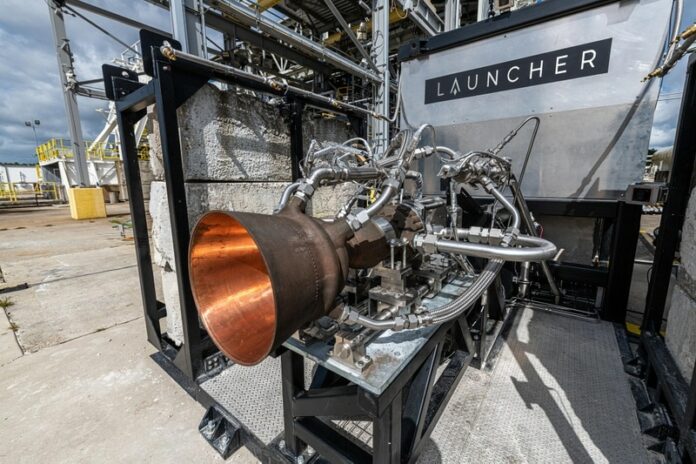A lot is happening in the private space industry right now. The current “space race” continuous to foster collaborations between public and private organizations, and urges a lot of startups to increase their capital and to invest in cutting-edge technologies to remain competitive in this domain.
All eyes are currently turned toward Launcher, a California-headquartered small launch vehicle manufacturer that has made real splash in the industry, ever since it successfully tested its full-sized E-2 liquid rocket engine developed using AM. The space company has just been awarded a $1.7M U.S. Space Force to further develop its E-2 engine.
The announcement follows the successful test-fire demonstrating the highest performing liquid oxygen & kerosene rocket engine combustion chamber at NASA Stennis Space Center. This development is described as the highest-performing liquid oxygen and kerosene rocket engine combustion chamber in the U.S.
As a reminder, Launcher E-2 is a closed cycle 3D-printed, high-performance liquid rocket engine in development for the Launcher Light launch vehicle, scheduled to fly in 2024. A single E-2 engine will boost Launcher Light to low Earth orbit with 150 kg of payload.
So far, the engineering team of Launcher has already demonstrated their ability to deliver the highest performance of any small launch vehicle in development worldwide, the highest performance of a liquid oxygen & kerosene liquid rocket engine combustion chamber in the U.S., as well as the second highest performance of a kerosene liquid rocket engine of any size, globally.
As you may guess, these achievements could not have been made possible without a well-thought mix of advanced manufacturing technologies. The latter include Additive Manufacturing – obviously – which was pivotal for the fabrication of a copper alloy combustion chamber in a single piece. Other key design decisions include the use of copper alloy and liquid oxygen regenerative cooling which helps to eliminate the need for film cooling of any kind on the injector or combustion chamber, the highest combustion pressure, a unique coaxial swirl injector that could bring combustion efficiency above 97.5% as well as an oxygen-rich closed-cycle engine, that removes the need for extra propellant to be used for turbopump power as required by open-cycle engines.
So, how does the company intend to enhance performance with this new contract?
The only possible means of material performance improvement is to increase combustion pressure. Despite the fact that we already beat the performance of every small launch vehicle in development, worldwide, we plan to do so in future engines. All other criteria, such as mixture ratios and combustion efficiency, are already near or at the theoretical maximum, the company says.
Moving forward, the next focus for the space outsider will be a full-duration testing of the E-2 turbopump in-flight configuration housings including the two-stage fuel pump at NASA Stennis Space Center as well as a long-duration testing of the E-2 combustion chamber at NASA Stennis Space Center.
All of these developments will be conducted alongside developments on Orbiter, an orbital transfer vehicle that will first fly later this year on a SpaceX Falcon 9 rideshare mission.
No matter how complex the challenges are, Max Haot, the founder and CEO remains grateful for relying on an in-house team that is dedicated to such an important mission, and for its technology partners, EOS & AMCM Gmbh, Velo3D, and recently Solukon for providing the ideal AM equipment to achieve their goal.
Remember, you can post job opportunities in the AM Industry on 3D ADEPT Media free of charge or look for a job via our job board. Make sure to follow us on our social networks and subscribe to our weekly newsletter : Facebook, Twitter, LinkedIn & Instagram ! If you want to be featured in the next issue of our digital magazine or if you hear a story that needs to be heard, make sure you send it to contact@3dadept.com






